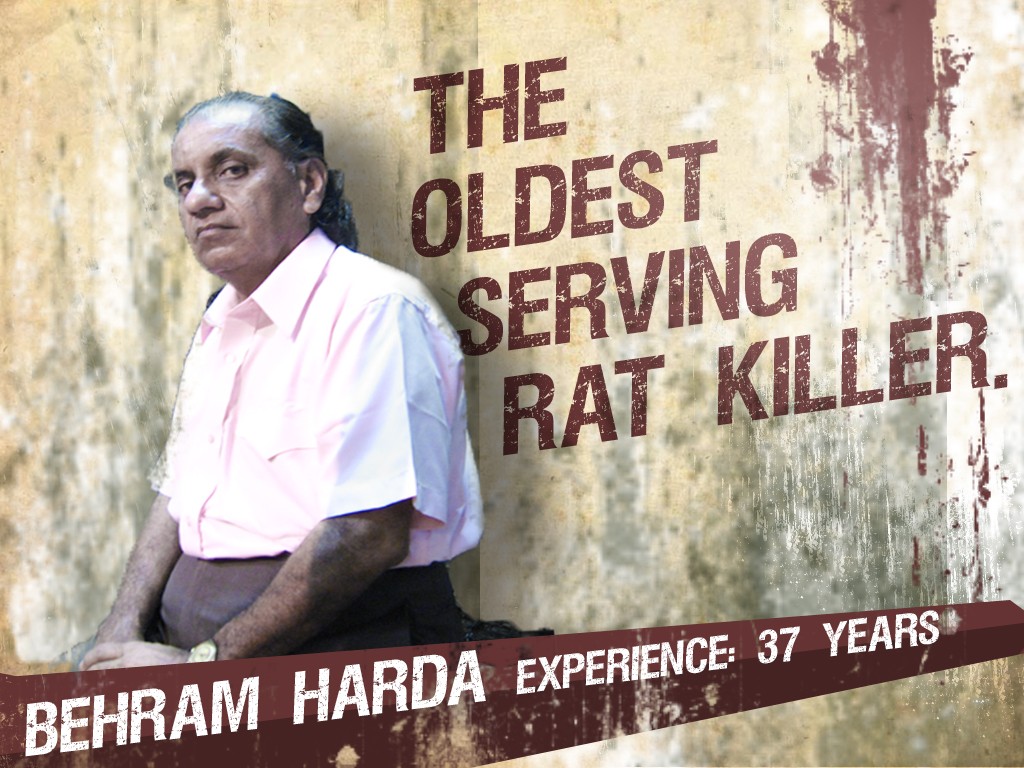Mumbai’s invisible army of rat-catchers – it’s more appropriate to call them rat-killers – were immortalised on the screen in Kiran Rao’s feature film Dhobi Ghat. Prateik’s character, Munna, supplements his meagre income washing clothes at Dhobi Ghat in Mahalaxmi by slaying rats for the Brihanmumbai Municipal Corporation. Miriam Chandy Menacherry’s documentary The Rat Race expands considerably on a fleeting moment of truth in Dhobi Ghat. Menacherry follows a municipal ward officer and his squad of underpaid but hardworking rat-slayers. The ‘race’ in the film’s title is to catch a specified number of rats every night, failing which the men will not be paid. Mumbai is a competitive city at the best of times, and this truth acquires new meaning in the shadows of the night in Menacherry’s film.
Menacherry and her principal cinematographer, Sameer Mahajan, explore a handful of intersecting happenings in the film. There is the story of Behram Harda, a hard-working officer on the verge of retirement who is single-mindedly dedicated to the cause of reducing Mumbai’s rodent population. There is Harda’s team of men, some of whom are should be sitting behind an office desk rather than roaming the streets hitting rats on the heads with sticks. Their job includes packing the dead rats into sacks and bringing them to the ward office to be counted and carted away to garbage dumps. This is Mumbai, India, so if you expect the men to be wearing safety equipment such as gloves or masks, forget it.
The footage of the dead rats is stomach-curdling, and produces an effect similar to the one created by Madurai filmmaker Amudhan RP’s Pee (Shit). Amudhan follows a woman who has to clean shit off the streets of Madurai every day. By forcing you to see what she has to regularly deal with – that is, footage of excreta – Amudhan makes you realise the indignity that is part of the job description of some unfortunate Indians. So it is in The Rat Race, where the only way to appreciate the mess dealt with by the rat-killers is to see it for yourself. Mahajan shoots with as much sensitivity as is possible in a film with such a subject, but there is no escaping the yuck-making nature of some sequences. Yet, rat-catcher jobs are fiercely fought for, as we find out at a recruitment drive. Menacherry manages to get both present and future rat-killers to give interviews on their chosen profession. The disgusting bits about the rats are contrasted with the earnestness of their killers.
However, Menacherry’s attempt to dilute gritty realism with quirkiness doesn’t always succeed. Harda is a real character – he wanted to be an actor as a young man and resumes his love of dancing after his retirement. Is he a product of the system? Did he become that way because of the dehumanising aspects of his work? We never find out. Since the documentary doesn’t open out to examine Mumbai’s larger sanitation issues, we are not able to view Bharda and his squad within a larger framework of anything. The film’s simple ambition is to introduce us to the city’s rat-killers and one of the persons handling them and in that it succeeds. But it fails to make larger points about garbage clearance and disposal, which forces the rat-killers to resort to ancient ways of keeping rodent numbers within manageable limits.
English, Hindi, Documentary, Color


